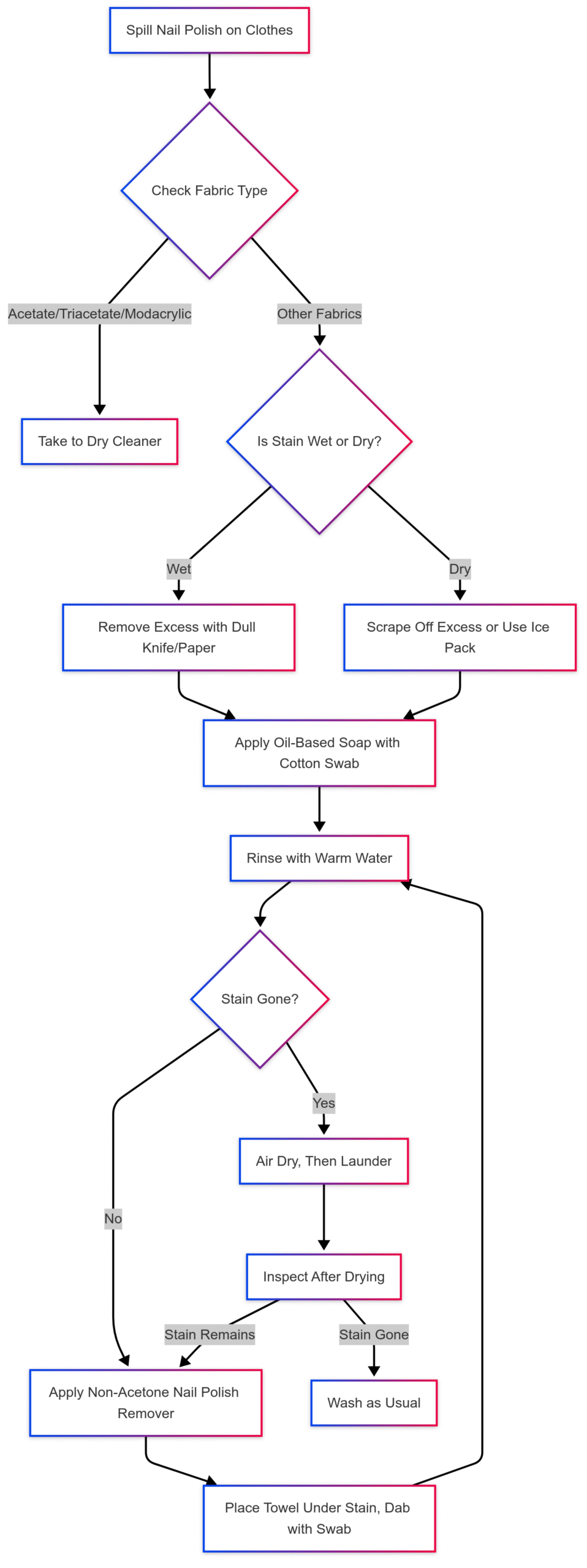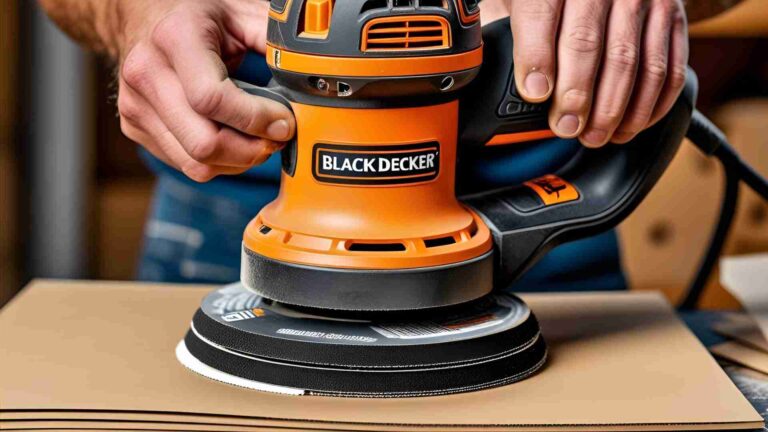How to Remove Nail Polish Stains from Clothes
Learn how to remove nail polish stains from clothes with expert tips, step-by-step guides, and household items. Save your favorite garments today!
Spilling nail polish on your favorite shirt or jeans can feel like a disaster, but it doesn’t have to be. With the right techniques and household items, you can effectively remove nail polish stains from most fabrics without causing damage. This guide provides a detailed, step-by-step approach to tackling both wet and dried nail polish stains, along with alternative methods, expert insights, and precautions to ensure your clothes remain in pristine condition. Whether you’re dealing with cotton, denim, or delicate fabrics, we’ve got you covered with practical solutions and professional advice.
Why Nail Polish Stains Are Tricky
Nail polish is an oil-based, dye-heavy substance that adheres strongly to fabric fibers, making it a formidable stain. Its vibrant pigments and quick-drying nature mean that immediate action is critical to prevent the stain from setting permanently. According to Patric Richardson, founder of The Laundry Evangelist and author of Laundry Love, “The key is to act fast but gently. Aggressive scrubbing can push the polish deeper into the fabric, making it harder to remove.”
This guide will walk you through the materials needed, detailed steps for stain removal, alternative methods for stubborn stains, and tips for handling delicate or specialty fabrics. We’ll also explore how to avoid common mistakes and ensure your garments stay safe during the cleaning process.
Materials You’ll Need
Before diving into the stain removal process, gather these household items to make the task easier and more effective:
- Piece of paper or dull knife: For lifting excess polish without spreading it.
- Cotton swabs or pads: For precise application of cleaning solutions.
- Oil-based laundry soap: Effective for breaking down oil-based stains.
- Non-acetone nail polish remover: Gentler on fabrics than acetone-based removers.
- Absorbent white cloth or paper towels: To absorb polish and prevent spreading.
- Warm water: For rinsing, adjusted to the fabric’s care label.
- Old towel: To place under the stained area during treatment.
- Optional: Hydrogen peroxide, baking soda, or hairspray for alternative methods.
- Optional tools: Soft toothbrush (for nail glue) or clothing brush (for dry polish).
Always check the garment’s care label to confirm which cleaning methods are safe for the fabric. Test any cleaning solution on a hidden area, such as an inside seam, to ensure it won’t damage or discolor the material.
Step-by-Step Guide to Removing Wet Nail Polish Stains
When nail polish spills on your clothes, quick action is essential. Follow these steps to remove wet nail polish stains effectively:
Step 1: Remove Excess Polish
If the polish is still wet, avoid rubbing or scrubbing, as this can push the polish deeper into the fabric. Instead, use a non-porous tool like a dull knife, credit card, or folded piece of paper to gently lift as much polish as possible. “You’ll be surprised how much comes off with this simple step,” says Richardson. Place an absorbent cloth or paper towel under the stain to catch any drips and prevent the polish from seeping through to the other side of the garment.
Step 2: Treat with Soap and Water
Using a cotton swab, apply a small amount of oil-based laundry soap to the stain, working from the outside edge toward the center to avoid spreading the color. Replace the swab as it picks up polish to prevent reapplying the stain. Rinse the area thoroughly with warm water (as hot as the fabric allows, per the care label) under a faucet to flush out the soap and loosened polish.
Step 3: Use Non-Acetone Nail Polish Remover for Stubborn Spots
If the stain persists, check the fabric for acetate, triacetate, or modacrylic, as these fibers can dissolve when exposed to acetone. If safe, place an old towel under the stained area and dab non-acetone nail polish remover onto the stain with a cotton swab. The towel will absorb the polish as it lifts, preventing it from spreading. Continue dabbing, replacing the swab and towel as needed, until the stain is gone. Rinse thoroughly with warm water.
Step 4: Air Dry and Inspect
Avoid placing the garment in a dryer until the stain is completely removed, as heat can set any remaining polish. Air dry the item and inspect it for residual stains. If traces remain, repeat the soap and water or nail polish remover steps as needed.
Step 5: Launder as Usual
Once the stain is fully removed, wash the garment according to its care label. Use a heavy-duty laundry detergent for best results, such as Tide Ultra OXI Liquid Detergent ($19.97 for 94.5 oz at major retailers) or Persil ProClean Stain Fighter ($21.99 for 100 oz).
Removing Dried Nail Polish Stains
Dried nail polish stains are more challenging but not impossible to remove. Here’s how to tackle them:
Step 1: Break Up the Dried Polish
For dried stains, start by gently scraping off as much polish as possible using a dull knife or credit card. You can also try the “cold pack trick”: place an ice pack over the stain for 5-10 minutes to make the polish brittle, then gently pick it off with tweezers or brush it away with a soft toothbrush. This step reduces the amount of polish you’ll need to dissolve.
Step 2: Apply Non-Acetone Nail Polish Remover
Test the fabric for acetate or other sensitive fibers. If safe, dab non-acetone nail polish remover onto the stain with a cotton swab, working over an absorbent towel. Replace the swab and towel as they absorb the polish color. Rinse with warm water after each application and repeat until the stain is gone.
Step 3: Treat Residual Stains
If any color remains, apply oil-based soap with a cotton swab and rinse thoroughly. For persistent stains, you may need to repeat the nail polish remover and soap steps several times. “Patience is key with dried stains,” Richardson advises. “Don’t rush it, or you risk damaging the fabric.”
Step 4: Air Dry and Launder
As with wet stains, air dry the garment to ensure the stain is fully removed before laundering. Avoid machine drying until the stain is gone to prevent setting it permanently.
Alternative Methods for Removing Nail Polish Stains
If you don’t have non-acetone nail polish remover or prefer gentler methods, try these household alternatives:
Hairspray
Hairspray contains alcohol, which can break down nail polish. Lay the garment flat with a paper towel underneath, spray the stain lightly with hairspray (e.g., Oribe Superfine Hair Spray, $41.00 at select retailers), and let it sit for a few seconds. Dab gently with a cotton swab or cloth, then rinse with warm water. Repeat as needed and launder as usual.
Hydrogen Peroxide
For fabrics sensitive to acetone, hydrogen peroxide (3% solution, $1.50 for 16 oz at pharmacies) is a safe alternative. Dab it onto the stain with a cotton swab, working from both sides of the fabric. Rinse thoroughly and air dry. Test first, as hydrogen peroxide can bleach some fabrics.
Baking Soda Paste
Mix baking soda with a small amount of water to form a paste. Apply it to the stain, let it sit for 10 minutes, then gently scrub with a soft toothbrush. Rinse with warm water and repeat if necessary. This method is ideal for delicate fabrics like silk.
Dish Soap
A non-flammable, oil-based dish soap (e.g., Dawn Ultra Dishwashing Liquid, $3.94 for 19.4 oz) can be used similarly to laundry soap. Work it into the stain with a cotton swab, rinse, and air dry.
Warning: Never use acetone-based nail polish remover on acetate, triacetate, or modacrylic fabrics, as it can dissolve them. Avoid machine washing or drying garments treated with flammable substances like nail polish remover or alcohol-based products.
Handling Nail Polish Stains on Specific Fabrics
Different fabrics require tailored approaches to avoid damage. Here’s how to handle common clothing materials:
Cotton and Denim
Cotton and denim are durable and can typically withstand non-acetone nail polish remover. Follow the standard steps above, using a microfiber cloth for denim to avoid lint. For jeans, rinse under cold water before applying remover to loosen the stain.
Silk and Delicate Fabrics
Silk, wool, and other delicate fabrics require gentle treatment. Use baking soda paste or hydrogen peroxide, and avoid aggressive scrubbing. If the stain persists, consult a professional dry cleaner. “Delicate fabrics can handle mild cleaners but not heavy friction,” says Richardson.
Dry Clean Only Fabrics
For garments labeled “dry clean only,” avoid at-home treatments beyond gentle scraping of excess polish. Take the item to a professional cleaner and identify the stain as nail polish for targeted treatment.
Upholstery and Carpets
For upholstery, test non-acetone nail polish remover on a hidden area, then dab gently with a cotton swab over an absorbent cloth. Vacuum the area afterward to restore texture. For carpets, use the same method but avoid pouring remover directly onto the stain to prevent pushing it deeper.
Removing Nail Glue from Clothes
Nail glue spills require a different approach. Soak the garment in cold, soapy water for 30 minutes, then gently scrub the glue with a soft toothbrush. Wash as usual with a heavy-duty detergent. For waterproof glue, consult a professional cleaner to avoid fabric damage.
Precautions and Common Mistakes to Avoid
To ensure successful stain removal without damaging your clothes, keep these tips in mind:
- Always Check the Care Label: Verify the fabric type and cleaning instructions before starting.
- Test First: Apply any cleaning solution to a hidden area to check for discoloration or damage.
- Avoid Acetone on Sensitive Fabrics: Acetone can dissolve acetate, triacetate, and modacrylic fibers.
- Don’t Scrub Aggressively: Gentle dabbing prevents spreading the stain or damaging fibers.
- Act Quickly: The sooner you treat the stain, the easier it is to remove.
- Avoid Heat Until Stain-Free: Never dry a stained garment in a dryer, as heat can set the stain permanently.
- Skip Flammable Substances in Machines: Fabrics treated with nail polish remover or alcohol should be air-dried to avoid fire hazards.
Recommended Products and Prices
Here are some effective products for removing nail polish stains, along with their approximate retail prices:
| Product | Use | Price (USD) | Where to Buy |
|---|---|---|---|
| Tide Ultra OXI Liquid Detergent | Heavy-duty laundry detergent | $19.97 (94.5 oz) | Major retailers |
| Persil ProClean Stain Fighter | Heavy-duty laundry detergent | $21.99 (100 oz) | Major retailers |
| Dawn Ultra Dishwashing Liquid | Oil-based dish soap | $3.94 (19.4 oz) | Grocery stores, pharmacies |
| Hydrogen Peroxide (3% solution) | Alternative stain remover | $1.50 (16 oz) | Pharmacies |
| Oribe Superfine Hair Spray | Alternative stain remover | $41.00 (9 oz) | Select retailers, salons |
| Zoya Remove Plus Nail Polish Remover | Non-acetone nail polish remover | $10.00 (8 oz) | Beauty retailers |
Process Flow for Nail Polish Stain Removal
Below is a flowchart illustrating the nail polish stain removal process for clarity:

When to Seek Professional Help
For large, dark stains or delicate fabrics like silk, wool, or vintage materials, professional dry cleaning is the safest option. Dry cleaners have access to specialized solvents and techniques that can remove nail polish without damaging the fabric. Point out the stain and specify that it’s nail polish to ensure proper treatment.
Preventing Nail Polish Stains
Prevention is always better than cure. To avoid nail polish mishaps:
- Work Over a Protected Surface: Lay down newspaper or a towel when painting your nails.
- Wear Old Clothes: Opt for clothing you don’t mind staining during manicures.
- Keep Supplies Handy: Have paper towels, cotton swabs, and non-acetone remover nearby for quick clean-up.
- Store Nail Polish Safely: Keep bottles tightly closed and stored upright to prevent spills.
Conclusion
Removing nail polish stains from clothes is entirely possible with the right tools and techniques. By acting quickly, using household items like non-acetone nail polish remover, oil-based soap, or hairspray, and following the care label, you can save your favorite garments from permanent damage. Whether dealing with wet or dried stains, cotton or delicate fabrics, this guide provides all the steps and precautions needed for success. With patience and care, you’ll be back to enjoying your manicure without worrying about the occasional spill.
For tough stains or delicate items, don’t hesitate to consult a professional dry cleaner. With these expert tips and a little elbow grease, your clothes can look as good as new.
Please share this How to Remove Nail Polish Stains from Clothes your friends and do a comment below about your feedback.
We will meet you on next article.
Until you can read, Directions For Using A Glass Percolator






